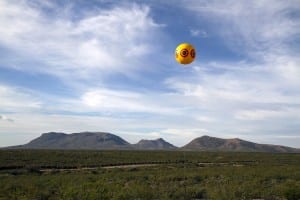The proliferation of rock pigeons (Columba livia) on high-rise buildings all over the world seems to coincide strangely with the disappearance of house sparrows. Both are synanthropic birds that crave to be around human dwellings, the sparrows indoors and the pigeons outdoors. But the patterns of human habitats and lifestyles seem to influence urban wildlife profoundly.
There are three types of rock pigeons: the ancestral rock pigeon in the wild, the domesticated ones, and the feral ones. They can interbreed; they are all but one species. Doves are different from pigeons. The wild rock pigeons live on rocky mountain cliffs and the seashore. They are said to have originated 5,000 to 10,000 years ago in the eastern Mediterranean region.
The Sumerians of Mesopotamia (what is southern Iraq today) seem to have started domesticating them from about 3000 B.C., breeding an amazingly wide diversity of fancy breeds. The Mughal emperors (who ruled from 1526 to 1858), particularly Akbar, fancied them. Akbar’s keepers reared for him about 20,000 pigeons. Of these, they used to carry along about 500 fantails, his favourites, on his camps.
Charles Darwin had a dovecote (pigeon house) in the garden of his country estate at Down House in Kent during 1850-1856. This was no hobby. He conducted breeding experiments to produce bewildering varieties (breeds) to study artificial selection and natural selection in survival and evolution. Some of the domesticated ones might have escaped as runaways back into the wild, as ferals in search of cliffs. But they seem to be returning to our cities, which are providing them ‘concrete cliffs’ on high-rises.
Air-conditioned apartments in these ‘cliffs’, with closed doors and windows, windows with broad ledge-like bases outside, window sills above to ward off rain and shine, provide excellent niches for these feral pigeons for courting, roosting, and even nesting and breeding. Unfortunately, changed urban architectural designs and lifestyles have deprived our conservative sparrows of their humble habitats of tiled houses, driving them away far from cities. Flocks of these feral pigeons comb every bit of grain and seed off the ground, as if in a feeding competition. They leave none for sparrows.
 Right now, feral pigeons on apartments, heritage buildings and architectural showpieces are detested as pests or vermin. In some advanced countries they are contemptuously referred to as ‘rats with wings’. Their droppings cause defacement and stench, and many consider their constant cooing, moaning and flapping of wings a nuisance. Feeding pigeons in the open is forbidden by law in some countries.
Right now, feral pigeons on apartments, heritage buildings and architectural showpieces are detested as pests or vermin. In some advanced countries they are contemptuously referred to as ‘rats with wings’. Their droppings cause defacement and stench, and many consider their constant cooing, moaning and flapping of wings a nuisance. Feeding pigeons in the open is forbidden by law in some countries.
Changes in architectural features on the exterior of high-rise buildings that often do not leave any flat ridges, and also running cables over possible perching sites keep feral pigeons away. Community dovecotes may be constructed in protected public places such as parks and playfields. Feral pigeons, unlike sparrows, are largely unaffected by pesticides, because they feed their squabs (young ones) with ‘pigeon milk’ or ‘crop milk’, not pesticide-contaminated insects as sparrows give their nestlings. Unlike long-distance homing pigeons or passenger pigeons, feral pigeons do not seem to be affected by electromagnetic radiation from cellphone towers.
Rock pigeons have incredible cognitive capacity. This, coupled with their amazing navigational skills, enable them during aerial sorties to scout for suitable cliff-like structures in cities. Pigeons can fly at speeds of 75 to 100 km an hour for distances of 800 to 1,000 km at a stretch. They are known to recognise the residents of their block by their facial features, voices and calls. They can recognise them by their photographs! That was how carrier pigeons delivered messages to soldiers on the warfront during World Wars.
If the pigeons too, like house sparrows earlier, are chased away from our habitats back into the wild, the next invaders on to our habitats in India may be the common crow or the squirrel. The choice is ours.
About Pigeon Patrol:
Pigeon Patrol Products & Services is the leading manufacturer and distributor of bird deterrent (control) products in Canada. Pigeon Patrol products have solved pest bird problems in industrial, commercial, and residential settings since 2000, by using safe and humane bird deterrents with only bird and animal friendly solutions. At Pigeon Patrol, we manufacture and offer a variety of bird deterrents, ranging from Ultra-flex Bird Spikes with UV protection, Bird Netting, 4-S Gel and the best Ultrasonic and audible sound devices on the market today.
Voted Best Canadian wholesaler for Bird Deterrent products four years in a row.
Contact Info: 1- 877– 4– NO-BIRD (www.pigeonpatrol.ca)

